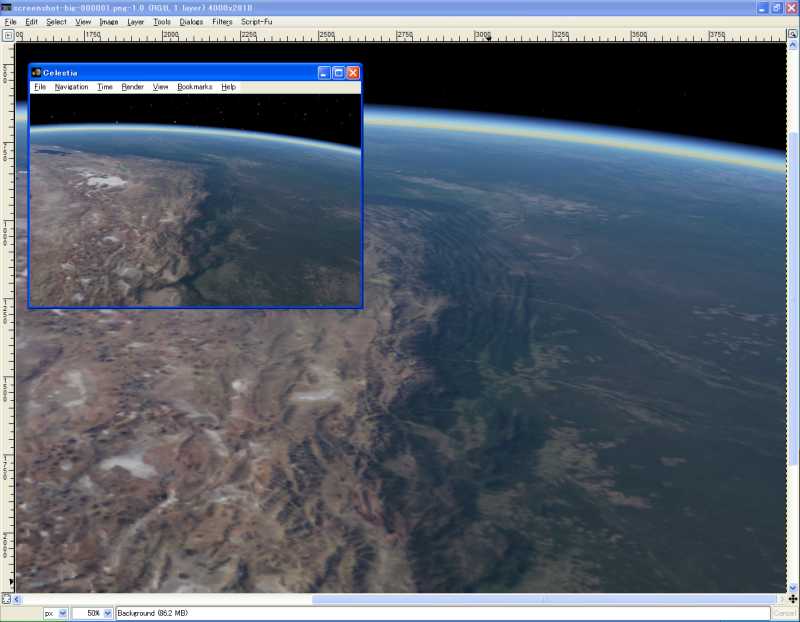
The foreground is Celestia in a small window. In the background is a 4000x2810 png, viewed at 50%, in the GIMP image editor.
The png was captured using tile rendering.
Tile rendering works mostly, but there are a couple of problems:
* The above capture uses a 64k RGBA+DXT5NM normal map produced using the latest F-TexTools and nmtools.
While the textures are undoubtedly high res, when viewed at 100% crop in the 4000x2810 capture, the perceived quality is lower
than in the smaller Celestia window.
What Celestia should be doing is not only rendering at a larger size, but also using higher level VT tiles to render.
* The tile rendering library requires that OpenGL drawing routine does not perform its own perspective transform.
However Celestia does depth bucketing so perspective transform cannot be separated from the drawing routine
without loss of quality. (visible as flickering spots on the Sun and seams on the Earth) <-- Problem fixed!
* Overlays are not rendered.
Despite these issues, the tile rendering worked surprisingly well (no visible seams!) and IMHO would be a worthwhile improvement to
Celestia's current screenshot functionality.

